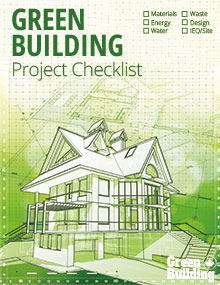When it comes to creating a building that is as energy-efficient as possible, ICF construction is going to play a big part. In case you’re unaware of the benefits of ICF and need a quick rundown, let’s go over the ICF building process and discuss how this new and innovative construction technique can provide you with energy-saving benefits across the board.
Net Zero is the Name of the Game
Nowadays, creating a net zero energy efficient building is the main goal of builders, whether they’re building a home or a commercial building. Net zero means that the building essentially produces as much energy as it uses. This is achieved through energy-efficient building techniques as well as renewable energy creation.
The first step to achieving this is to maximize energy efficiency. The first step to maximizing energy efficiency is to build with ICFs. It’s impossible to create a building that is as energy efficient as possible without building the wall system from ICFs. This is because insulated concrete forms are far superior to wood-framed building is a variety of ways.
Firstly, the hollow-concrete, interlocked wall system of ICFs is much more air and moisture-resistant than wood. Because the concrete blocks are all interlocked with rebar, there are no spaces or gaps anywhere in the wall system. This air-tightness improves energy efficiency by a vast margin. Another energy-saving aspect of ICF construction is the fact that there are no thermal bridges anywhere in the wall system.
Wooden studs and other conductive material create a “bridge” for heat to be transferred from the inside to the outside. A wall system that features wooden studs throughout can put a big dent in your energy-saving efforts.
Other Ways to Achieve a Net Zero Building
Of course, minimizing energy waste through ICF construction is only the first step to creating a net zero building. You also need other sustainable construction techniques like solar panels, dampers, and below-grade insulation to complete the project. Solar panels are a good place to start because they will take in sunlight and turn it into energy, a crucial part of net zero construction.
Dampers to control the airflow of conditioned air throughout your home or building are important as well, because they allow you to use your HVAC system as efficiently as possible without wasting conditioned air in rooms that aren’t being used. You should also install some below grade insulation in any rooms that are below ground level. This will help to prevent them from losing most of their heat through the walls during winter.
Energy Efficiency Starts with ICF Construction
If you want to create a net zero energy efficient building, the first step is building the wall system with ICFs. The airtightness and lack of thermal bridges will do wonders for your overall energy efficiency. Other sustainable construction techniques should be implemented as well, including commercial dampers in commercial buildings, regular dampers in residential buildings, solar panels and below grade insulation. Combine all of these techniques and strategies and your monthly energy bill will be next to nothing.
Matt Lee is the owner of the Innovative Construction and Building Materials blog and a content writer for the building materials industry. He is focused on helping fellow homeowners, contractors, and architects discover materials and methods of construction that save money, improve energy efficiency, and increase property value.
image: Scott Webb


